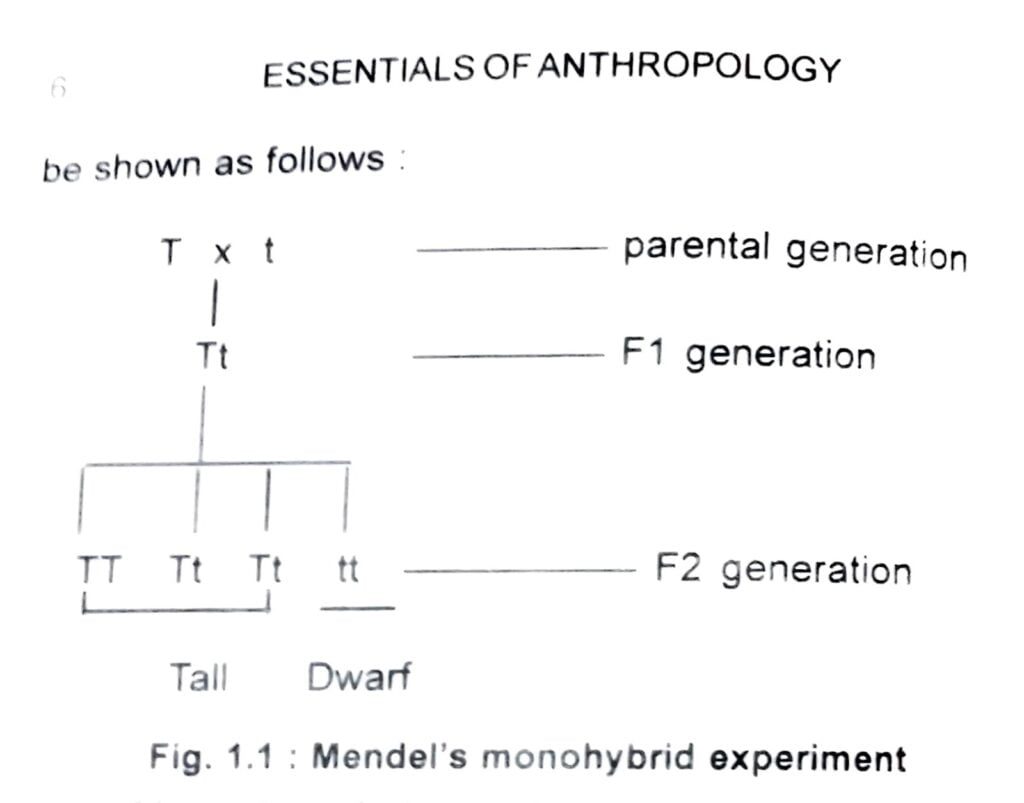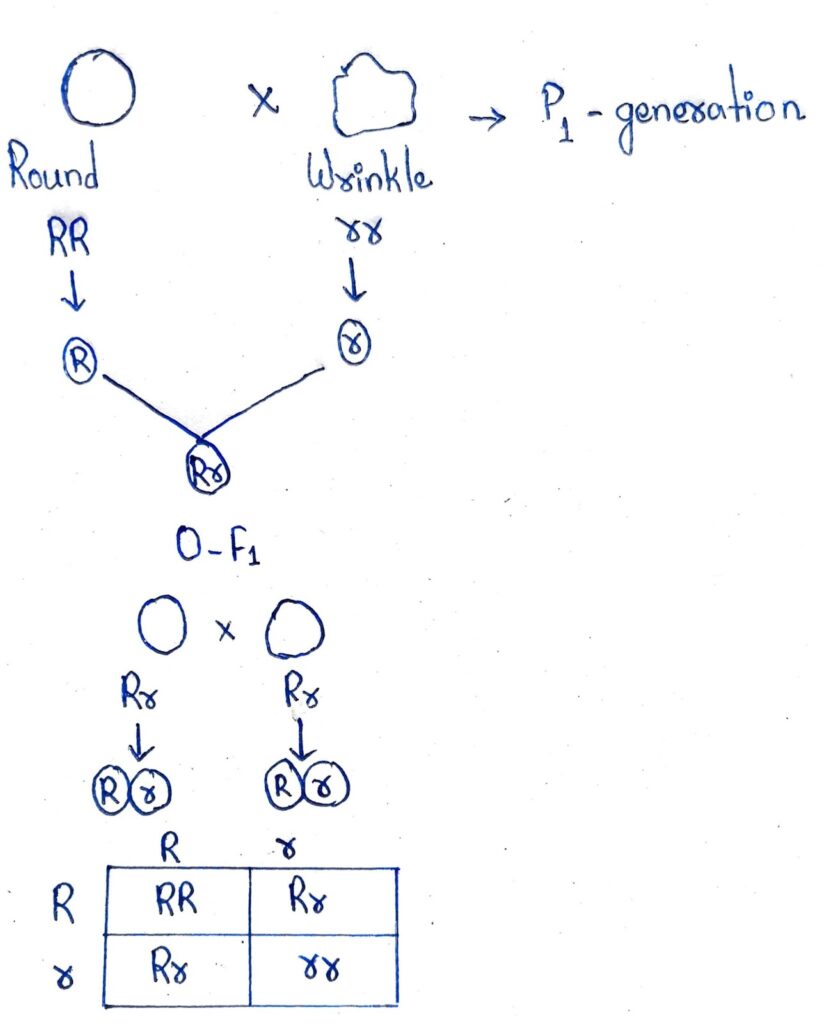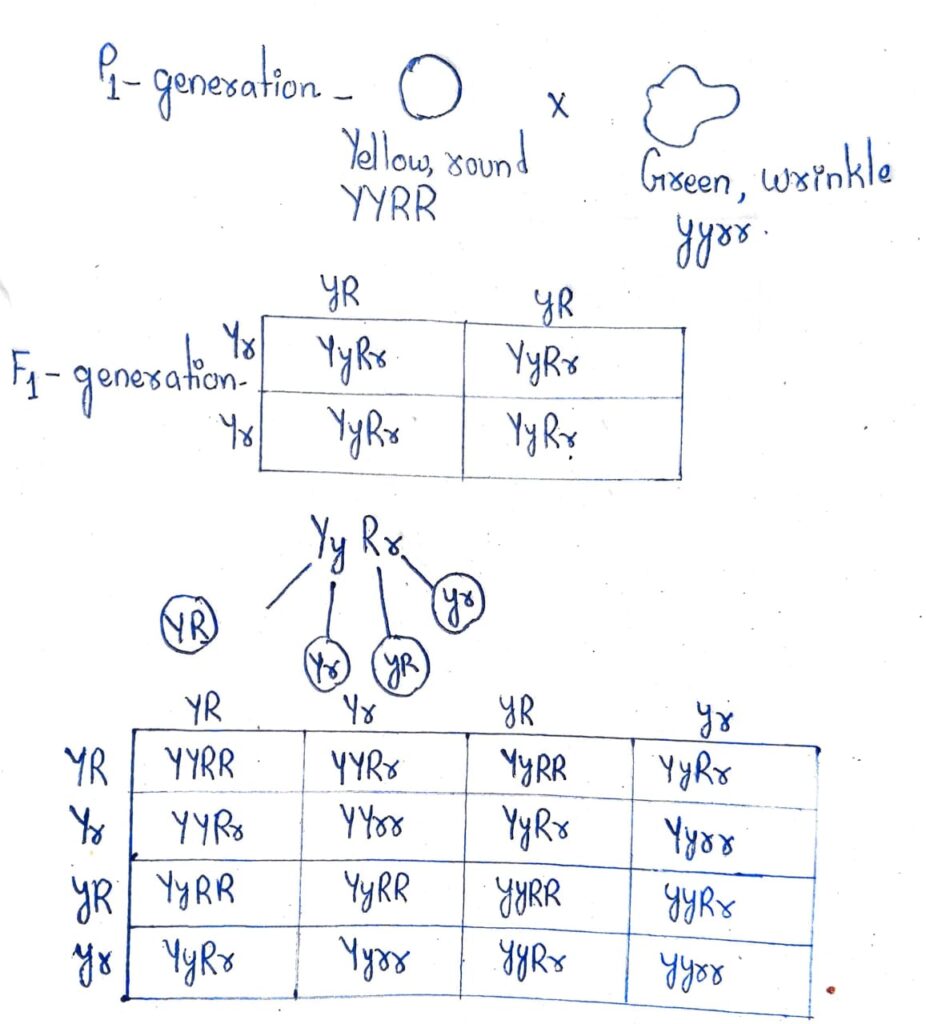Class 12 Anthropology Chapter 1 Physical Anthropology, HS 2nd year Anthropology notes, Anthropology Class 12 Question Answer to each chapter is provided in the list so that you can easily browse throughout different chapters SCERT Class 12 Anthropology Chapter 1 Physical Anthropology and select needs one.
Class 12 Anthropology Chapter 1 Physical Anthropology
Also, you can read the SCERT book online in these sections Solutions by Expert Teachers as per SCERT (CBSE) Book guidelines. NCERT Solution of Class 12 Anthropology Chapter 1 Physical Anthropology is part of AHSEC All Subject Solutions. Here we have given Assam Board Class 12 Anthropology Chapter 1 Physical Anthropology Notes for All Subjects, You can practice these here.
Physical Anthropology
Chapter – 1
ANTHROPOLOGY
Very short type questions
1. Of which race dark skin colour is a characteristic?
Answer: For Caucasoid race dark skin colour is a characteristic.
2. To which race the Eskimos belong?
Answer: Eskimos belong to Mongoloid race.
3. Which ethnic group is known as African Pigmy?
Answer: Forest people of Central Africa is known as African Pigmy.
4. Who discovered the ABO blood groups?
Answer: Karl Landsteiner discovered the ABO blood groups.
5. Of which race epicanthic fold is a characteristic?
Answer: Of Mongoloids race epicanthic fold is a characteristic.
Short Questions
6. What is epicanthic fold? What are its types?
Answer: An epicanthic fold is a skin fold of the upper eyelid covering the inner corner of the eye.
Its types are:-
a) Complete Mongoloid fold.
b) Internal epicanthic fold.
c) External epicanthic fold.
d) Median fold.
7. Define race. What are the main races.
Answer: Race is a group which shares in common a certain set of innate physical characters and a geographical origin within a certain area.
The main races are:-
a) Caucasian races.
b) Mongoloid races.
c) Negroid races.
8. What is called prognathism? What are its different types?
Answer: An extension or bulging out of the lower jaw is called prognathism. lt occurs when the teeth are not properly aligned due to the shape of the face bones.
Its different types are:-
a) Mandibular prognathism.
b) Maxillary prognathism.
c) Bimaxillary prognathism.
9. What do you mean by heredity? Who discovered heredity?
Answer: The tendency of inheritance of parental characters is called heredity. It is defined as the characteristics we get genetically from our parents and our relatives before them. Gregor Mendel discovered heredity.
10. What is racial criterion? Write down the names of four racial criteria.
Answer: Racial classification are made on the basis of number of external and internal physical traits. Such types of traits used in classification of human races are known as racial criterion.
The name of four racial criteria are:-
a) Skin colour.
b) Head form.
c) Eye.
d) Blood group.
11. Show the monohybrid ratio with neat diagram.
Answer: A monohybrid cross results in a phenotypic ratio of 3:1( dominant to recessive), and a genotypic ratio of 1:2:1 (homozygous dominant to heterozygous to homozygous recessive).

12. What are genotype and phenotype?
Answer: Genotype – The term genotype is used to indicate the total genetic constitution of an individual. A genotype is the genetic arrangement that makes up the traits that on organism inherited from its parents.
Phenotype- The term phenotype is used to designate the appearance of an individual. It is the observable characteristics or traits of an organism that are produced by the interaction of the genotype and the environment.
13. What is genetics? Write short notes on the discoverer of inheritance.
Answer: The detailed study of genes, genetic variation, and heredity is called genetics. It can be defined as the passing of genetic information from parents to their offsprings or progeny or the next generation.
Gregor Mendel, through his work on pea plants, discovered the fundamental laws of inheritance. He deduced that genes come in pairs and are inherited as distinct units, one from each parent. Mendel tracked the segregation of parental genes and their appearance in the offspring as dominant or recessive traits.
Essay type questions
14. Give an account of skin colour as a racial trait.
Answer: In the population of the world, three shades of skin colour are seen. The skin colour has been considered as one of the distinguishing characteristics in the study of the human race.
Broadly speaking, the people of the world can be classified into three groups on the basis of skin colour.
a) Leucoderma or white-skinned people: The European are the classic example of this group. This category also includes the Western Asiatics, North Africans, Polynesians etc. who possess skin colour which varies from pinkish-white to light brown.
b) Xanthoderms or yellow-skinned people: The Asiatic Mongoloids are the best representatives of this group. Besides them some Amerinds, Bushmen and Hottentots also exhibit a yellowish tinge in their skin colour.
c) Melanoderma or Black- skinned people: The Negroids are the best examples of this group. Papuans, Melanesians, Pre-Dravidians etc. fall in this division.
The human skin comprises two main layers-the epidermis or the upper layer, the dermis or the lower la. There is no blood supply in the epidermis. The skin pigments or melanians are found in this layer. The colour of the pigments varies from yellow to black. But it is to be noted that the colour of the skin depends on the amount of the granules present in the deeper layer of the epidermis.
15. Mention the names of the main subdivisions of Mongoloids. State their geographic distribution.
Answer: The names of the main sub-division of Mongoloids are:
a) Classic or central Mongoloid Geographic distribution – This type of Mongoloid is distributed in Siberia and Amur river district and sporadically in Northern China, Mongolia and Tibet.
The representatives of this racial type are: Mongoloid tribes like Buriat, Koryak, Goldi, Gilyak etc; Tibetians ; some Northern Chinese etc.
b) The Arctic or Eskimoid Geographic distribution – The Eskimoids are fount in Northern Asia, the Arctic coast of North America, Greenland, Labrador and western Alaska. The type is represented by the Eskimos, chukchis, Kamtchadales, yakuts, samoyedes etc.
c) The Indonesian- Malay Mongoloid
i) Malay type Geographic distribution- They are found in Southern China, Indo-china, Burma, Thailand, Malay peninsula, Dutch, East Indies, the philippines, Japan etc. The Japanese mostly belong to this racial type.
ii) Indonesian type of Nesiot Geographic distribution – This type is distributed in Southern china , Indo-chian, Burma, Thailand, the interior of the Malay Archipelago, etc.
d) The American Indian or the American Geographic distribution – The American Indian live in different parts of North, Middle and south America.
16. Mention the names of the main sub-divisions of Negroids. Show their geographic distribution.
Answer: The names of the main subdivisions of Negroids are: The Negroid race is divided into
a) African Negro. and
b) Oceanic Negro.
a) African Negro is further divided into the following groups.
i) True Negroes Geographic distribution – These people live in west Africa and in Guinea coast.
ii) Forest Negroes Geographic distribution – They inhabit the region extending from the Senegal River in the west to Sudan, uganda and Northern Rhodesia.
iii) Nilotic Negroes or Nilotes Geographic distribution – The Nilotic Negroes are found in the region of upper Nile valley and Eastern Sudan.
iv) Bantu-Speaking Negroid or ‘Bantu’ Geographic distribution – These people are distributed in central and Southern Africa.
v) Negrillo or African Pygmy Geographic distribution – The Negrillos have been represented by the Akka, Ba Twa, Bam Bute etc. who live in Equatorial forests of congo region.
b) Oceanic Negro includes two sub-classes, namely.
i) Negritos, bth Asiatic and Oceanic. and
ii) papuans and Melanesians.
i) Negritos
* Asiatic pygmy groups Andamanese:
Geographic distribution – The Andamanese live in the Andaman Islands.
Semange:
Geographic distribution – The Semangs inhabit in the central region of the Malay peninsula and East sumatra.
Aeta:
Geographic distribution – They live in the philippine Islands.
* Oceanic pygmy Tapiro:
Geographic distribution – They are the inhabitants of
New Guinea.
Papuans and Melanesians:
Papuans
Geographic distribution – The papuans are found in New Guinea and other Islands of Melanesia.
Melanesians
Geographic distribution – The Melanesians live in some coastal parts of New Guinea and the neighbouring Islands in Fiji’s Admiralty Island, New caledonia.
17. What is Mendel’s law of inheritance? Explain briefly with diagrams.
Answer: The Mendel’s law of inheritance are:
a) Law of dominance: In Mendel’s pea plant breeding experiment, it was found that the hybrid pants showed only one of the contrasting characters. All the pants were tall in the F1 generation. Hence Mendel called tallness, the dominant and dwarfness the recessive character. According to Mendel, a character that represents in the hybrid is called dominant and the one that fails to express is called recessive. In the F1 generation, the recessive characters are present but remained hidden. The character that expresses itself in the F1 generation is termed dominant. On the other hand the character that remains hidden or suppressed in the F1 generation is called recessive. Thus tallness is dominant and dwarfness is recessive.
Example: Mendel’s pea plant
TT × tt
(tall) (dwarf)

Phenotypic ratio = 3:1
Genotypic ratio = 1:2:1
b) Law of Segregation: In Mendel’s pea plant experience, it was observed that when the cross-bred pea plants of F1 generation are allowed to cross, they exhibited both tall and dwarf plants in the ratio 3:1. However, it was found that the dwarf characters had been out of sight for some time but it was not lost or altered permanently. In the F2 generation, dwarf pants appeared again. This clearly indicates that his character of dwarfness had been transmitted through the tall plants of F1 generation. When the dwarf pants were allowed to self-fertilise they produce only dwarf varieties. Thus it is clear that through the dwarfness had been suppressed by the tallness in the F1 generation, yet its characters remained unaltered. In other words, both tallness and dwarfness remained together without contaminating or diluting each other. This indicates that characters are independent of one other.
Monohybrid cross
Example: Shape of pea seed
Round = RR, Rr
Wrinkle = rr

Ratio = 3:1
c) Purity of Gametes: A gamete has one or the other of a pair of allelomorphs. Therefore, a gamete may carry only the gene for tallness or dwarfness, but it cannot carry both. Thus in Mendel’s experiment a gamete carried either the gene for tallness or dwarfness, not both the genes. It further implies that the two types of gametes, T (tall) type and t(dwarf) type, will be produced in equal numbers. An important implication of this law is that a gamete is always pure for a character and never a hybrid. This is called the purity of gametes which forms the bulk of Mendel’s lavish discovery.

Dihybrid ratio = 9:3:3:1
Monohybrid ratio = 1:2:1
18. Write short notes:
i) Ainu
Answer: The physical features of Ainu are:
a) Skin colour – Light brownish white.
b) Hair form – Wavy.
c) Hair colour – Dark brown to black.
d) Body and facial hair – Abundant rather excessive, therefore they are sometimes called the “Hairy Ainu”
e) Head form – Mesocephalic.
f) Eye colour – Medium to dark brown.
g) Nose – Mesorrhine to platyrrhine.
h) Nasal root – Slightly depressed.
i) Nasal bridge – Moderately high.
j) Forehead – Not slanting.
k) Face form – Mesoprosopic and orthognathic.
l) Chin – Well developed.
m) Lips – Thin.
n) Statue – Medium to short.
Geographic distribution – The Ainus live in Northern Japan, South Sakhalin and Yezo. They represent a very ancient racial stock of Japan.
ii) Negrito
Answer: The Negrito are several different ethnic groups who inhabit isolated parts of a region know today as Austronesia. The word Negrito is the Spanish diminutive of negro, used to mean “little” black person. The Negrito are from the philippines. They are the most genetically distant human population from Africans at most loci studied thus far.
The Andamanese, Semang, Aeta, Tapiro are the typical representatives of this racial type. Out of these four, the first three belong to Asiatic pygmy group while the Tapiro belongs to the Oceanic pygmy group.
a) Asiatic pygmy groups.
Andamanese:
Geographic distribution – The Andamanese live in the Andaman Islands.
Semange:
Geographic distribution – The Semangs inhabit in the central region of the Malay peninsula and East sumatra.
Aeta:
Geographic distribution – They live in the philippine Islands.
b) Oceanic pygmy.
Tapiro:
Geographic distribution – They are the inhabitants of New Guinea.
* Papuans and Melanesians.
Papuans:
Geographic distribution – The papuans are found in New Guinea and other Islands of Melanesia.
Melanesians:
Geographic distribution – The Melanesians live in some coastal parts of New Guinea and the neighbouring Islands in Fiji’s Admiralty Island, New caledonia.
iii) Eskimo:
Answer: The two main groups of Eskimos are – Yupik and Invit. An Eskimo is a member of the group of peoples who lives in Alaska, Northern Canada, eastern Siberia, and other parts of the Arctic. It is a term used to refer to two closely related Indigenous peoples. The self-designations of Eskimo peoples vary with peoples vary with their languages and dialects.
Eskimo, more commonly called Invit, is a term used to describe people who primarily live, in the far north, usually the Arctic. The Arctic is located north of the Arctic Circle, and although it has extreme cold temperatures, Eskimos have adopted to the harsh environment both physically and culturally.
The Paleo – Eskimo peoples appear to have developed in Alaska from people related to the Arctic small tool tradition in eastern Asia, whose ancestors had probably migrated to Alaska at least 3,000 to 5,000 years earlier.
iv) Lapp:
Answer: The physical features of Lapp are:
a) Skin colour – Greyish yellow to yellowish brown, sometimes light.
b) Hair colour – Usually straight or slight wavy.
c) Hair colour – Usually dark brown or black.
d) Body and facial hair – Sparse.
e) Head form – Brachycephalic.
f) Eye colour – Variable.
g) Epicanthic fold – Occasionally present.
h) Nose – Mesorrhine.
i) Nasal profile – Concave.
j) Forehead – Narrow.
k) Brow ridges – Faintly developed.
l) Face form – Moderately broad and remarkably short
m) Cheek bones – Moderately prominent with forward projection
n) Lips – Moderately thick.
o) Stature – Short.
Geographic distribution – The Lapps are well distributed in Northern Scandinavia, Northern Finland, Sweden, Norway and North- Western region of Russia.

Hi, I’m Dev Kirtonia, Founder & CEO of Dev Library. A website that provides all SCERT, NCERT 3 to 12, and BA, B.com, B.Sc, and Computer Science with Post Graduate Notes & Suggestions, Novel, eBooks, Biography, Quotes, Study Materials, and more.



Hello your answers are amazing it’s help me a lot but can you write the answers to real not like guide answer thank you 😊
Dear User, we are really glad that you like our Notes. Your support and voice are very important to us.